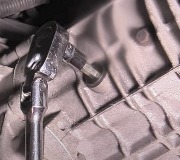Code 700 is in the Engine Computer. It just means there is a code in the Transmission Computer. Not all aftermarket scanners will read anything other than engine codes so you might have to find a different mechanic.
You will never feel the slippage that the computer can detect. It's not like the engine "runaway" that we got many years ago from the hydraulically-controlled transmissions.
Here's some generalizations. If you start the engine, then as soon as you begin to move, it goes immediately to limp mode, it is more likely to be sensor-related. The same is true if you're cruising at a steady speed when no shifts are taking place.
If it bounces down to limp mode right after or during an up-shift, it is more likely to be slippage in one of the clutch packs. Here's a hint. If it always occurs when up-shifting only from second the third gear, accelerate harder than normal, then let off the gas a bunch to let it shift to third with no load. You can accelerate again once it's solidly in gear. If the trick works, you can be pretty sure it's clutch slippage.
Besides reading codes in the Electronic Automatic Transmission Controller, (EATX), the Chrysler DRB3 scanner will also display the "clutch volume index", (CVI). That is a set of four numbers corresponding to the number of ccs of fluid it takes to apply each clutch pack. I don't know what normal is, but an experienced transmission mechanic will. As the clutch plates wear they become thinner so it takes more fluid to squeeze them together. The computer watches those numbers and uses them to update the shift schedules. To avoid the typical engine speed flare-ups that were common indicators of bad things to come, the computer eliminates that by turning on the solenoid to apply one gear a little sooner before it releases the previous gear. That way by the time one clutch pack is released the next one will be fully locked up. The result is nice crisp shift until the day when no amount of updating can overcome the wear. What you don't get is the year or two of warning that you'll be needing a rebuild soon.
I wouldn't panic about the mileage since the last fluid change.
Thursday, February 24th, 2011 AT 12:18 AM




